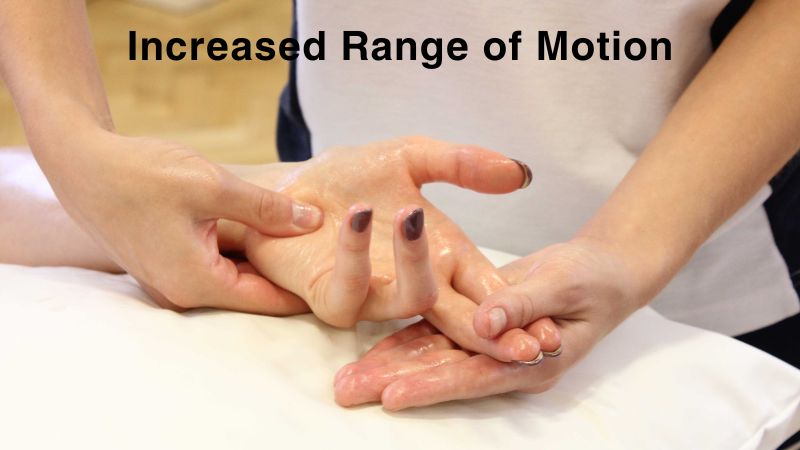Fibromyalgia is a complex chronic pain condition that affects millions of people worldwide, characterized by widespread musculoskeletal pain, fatigue, and tenderness in localized areas. Managing the symptoms of fibromyalgia can be challenging, often requiring a multifaceted approach that addresses both physical and emotional well-being. Among the various therapeutic modalities available, massage therapy stands out as a promising option, offering a multitude of benefits for individuals living with fibromyalgia. Let’s delve into with Techlifez the comprehensive benefits of massage for fibromyalgia and how it can positively impact the lives of those affected by this condition.
Contents
The Benefits of Massage for Fibromyalgia
1. Pain Relief:
One of the most notable benefits of massage for fibromyalgia is its ability to provide relief from chronic pain. By targeting tense muscles and trigger points, massage therapy can help alleviate muscle stiffness and reduce the intensity of pain experienced by individuals with fibromyalgia. Through various techniques such as kneading, compression, and friction, massage promotes relaxation and releases endorphins, the body’s natural painkillers, offering temporary respite from the relentless pain associated with fibromyalgia.
2. Improved Sleep:
Sleep disturbances frequently afflict individuals with fibromyalgia, compounding fatigue and diminishing overall quality of life. Massage therapy emerges as a promising remedy, fostering relaxation and improving sleep quality. By alleviating stress and anxiety, massage induces a profound state of relaxation conducive to restful sleep, enabling those with fibromyalgia to attain more rejuvenating and restorative sleep cycles. Through regular massage sessions, individuals can potentially mitigate the impact of sleep disturbances, enhancing their overall well-being and quality of life despite the challenges posed by fibromyalgia.
3. Reduced Stress and Anxiety:
Living with fibromyalgia presents emotional challenges, frequently resulting in elevated stress and anxiety levels. In such circumstances, massage therapy serves as a sanctuary, providing a much-needed respite from the constant demands of everyday life. Through gentle strokes and soothing manipulations, massage stimulates the release of neurotransmitters linked to relaxation, including serotonin and dopamine. This process assists individuals with fibromyalgia in managing stress more effectively, fostering a sense of inner peace amidst the turmoil of their condition. By incorporating massage into their wellness routine, individuals can find solace and relief from the emotional burdens of fibromyalgia, improving their overall quality of life.
4. Increased Range of Motion:
The musculoskeletal pain and stiffness associated with fibromyalgia can significantly limit mobility and flexibility, making everyday tasks challenging. Massage therapy can help combat these limitations by incorporating gentle stretching and mobilization techniques aimed at improving range of motion in affected joints and muscles. By loosening tight muscles and enhancing flexibility, massage empowers individuals with fibromyalgia to move more freely and engage in activities they once enjoyed.
5. Improved Circulation:
Poor circulation can exacerbate symptoms of fibromyalgia, leading to increased pain and discomfort. Massage therapy stimulates blood flow to the muscles and tissues, facilitating the delivery of oxygen and nutrients essential for healing and regeneration. By enhancing circulation, massage helps alleviate muscle tension, reduce inflammation, and promote overall well-being in individuals with fibromyalgia.
6. Enhanced Mood:
Living with chronic pain can take a toll on mental health, often leading to feelings of depression and despair. Massage therapy offers a beacon of hope in the darkness, lifting spirits and restoring a sense of vitality to individuals with fibromyalgia. Through the release of endorphins and the reduction of stress hormones such as cortisol, massage promotes feelings of happiness and relaxation, fostering a positive outlook on life despite the challenges posed by fibromyalgia.
7. Decreased Trigger Points:
Trigger points, or localized areas of muscle tightness and tenderness, are a hallmark feature of fibromyalgia and can contribute to widespread pain and discomfort. Massage techniques such as myofascial release and trigger point therapy are specifically designed to address these tender points, helping to alleviate pain and reduce their sensitivity over time. By targeting trigger points, massage therapy offers targeted relief to individuals with fibromyalgia, allowing them to experience greater comfort and improved quality of life.
8. Better Quality of Life:
Ultimately, the cumulative benefits of massage for fibromyalgia therapy translate into a better quality of life for those affected by this condition. By addressing pain, improving sleep, reducing stress, and enhancing overall well-being, massage therapy empowers individuals with fibromyalgia to reclaim control over their lives and pursue activities that bring them joy and fulfillment. Whether it’s enjoying a leisurely walk in nature or spending quality time with loved ones, massage therapy opens the door to new possibilities and restores hope for a brighter future.
Sum Up
In conclusion, the benefits of massage for fibromyalgia are vast and profound, offering a holistic approach to managing the complex symptoms of this chronic pain condition. From pain relief and improved sleep to reduced stress and enhanced mood, massage therapy provides a beacon of healing for individuals living with fibromyalgia. By incorporating massage into their treatment regimen, individuals with fibromyalgia can experience tangible improvements in their physical and emotional well-being, paving the way for a life filled with greater comfort, vitality, and resilience.




